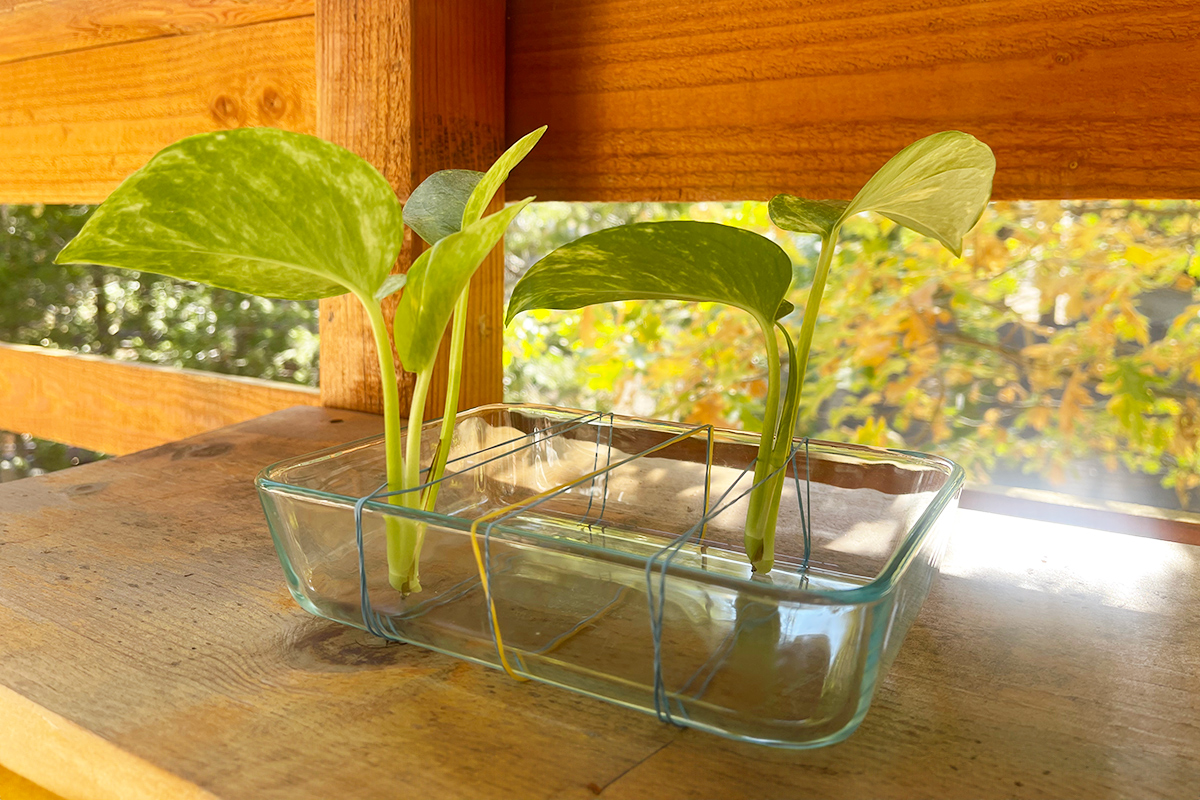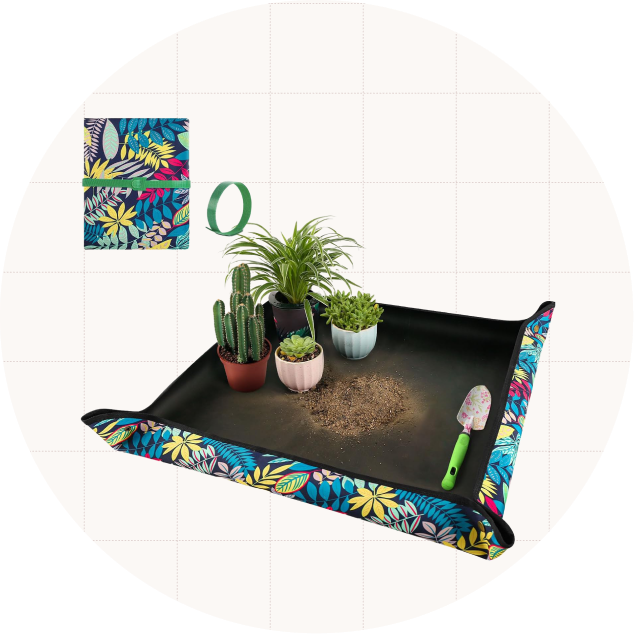 | | January 3, 2025 |  |
|
|
| If you collect and care for houseplants, chances are you've propagated a few cuttings to grow your pack of pothos or gift a jade plant to a friend. This is the process of cutting a stem or a leaf from an existing plant to create an entirely new one. Many houseplants — philodendrons, spider plants, African violets, and spiderwort, to name just a few — can be easily propagated in fresh water. |
 | | Credit: Kelsey Morrison/ House Outlook Editor |
|
| While there are countless vessels you could use for propagation (think: test tubes, tall shot glasses, upcycled jelly jars, etc.), one larger container may be more suitable if you're attempting to grow many different cuttings at once. That's where this space-saving plant hack comes into play. |
| How To Propagate Multiple Cuttings at Once |
| Grab a square or rectangular waterproof container. (A shallow food storage container or storage bin would work well. We used a 7.5-by-5.5-inch glass Pyrex dish with a depth of 2 inches.) Get a pack of rubber bands and stretch two of them over the opening of the container, positioning them side by side so they are touching. The tighter the rubber bands, the better; this will ensure the cuttings stay upright. Repeat this step, leaving about an inch of space between each pair of rubber bands, until you reach the end. |
| Secure a houseplant cutting between a single pair of rubber bands, stem side down. Depending on how taut your rubber bands are and the weight of your cuttings, you can place multiple stems in the same row or just stick to one cutting per rubber band set. |
| Fill the container with enough fresh water to submerge the bottom of the stem or node. Some houseplants naturally release hormones to help them root, so avoid using too much water as this could dilute the growth environment. We used a half-inch of water in our container. |
| Change the water once a week, or more frequently if it becomes cloudy or smelly. After a few weeks, once the cuttings' roots have grown 1 to 2 inches, you can plant them in potting soil and water until moist. Alternatively, you can continue to grow your cuttings in water. |
| Propagating houseplants is a great way to grow your collection while saving money. (We won't tell if you pocket a fallen leaf or two from your local home improvement store.) Using a larger container instead of multiple smaller ones can free up counter space and help you stick to your watering schedule. Plus, it reduces the risk of a rare plant cutting going missing and drying out. |
|
 | | HNXTYAOB Repotting Mat | | I often find myself repotting houseplants in my kitchen sink or arranging cut flowers on the countertop. This inevitably creates a big mess that needs to be cleaned up right away. With this repotting mat, I don't have to worry about spilled dirt or fallen petals. The mat has a waterproof lining and snap-together corners for raised edges. It's great for gardening indoors when it's too cold to go outside, or for working with plants in small spaces. — Kelsey Morrison, House Outlook Editor |
|
|
|
 | | Kelsey Morrison | | Staff Editor |
|
| Kelsey Morrison is the Staff Editor of House Outlook. She has been covering all things home-related for over a decade, including real estate, interior design, commerce, and a slew of other lifestyle topics. She lives in a Southern California mountain town with her husband and three dogs. She describes her personal design style as 1970s ski chalet-chic and has a thing for latch-hook tapestries. |
|
|
|
|
| Was this email forwarded to you? |
|
| No longer interested in receiving our content? |
|
|
|
|
No comments:
Post a Comment